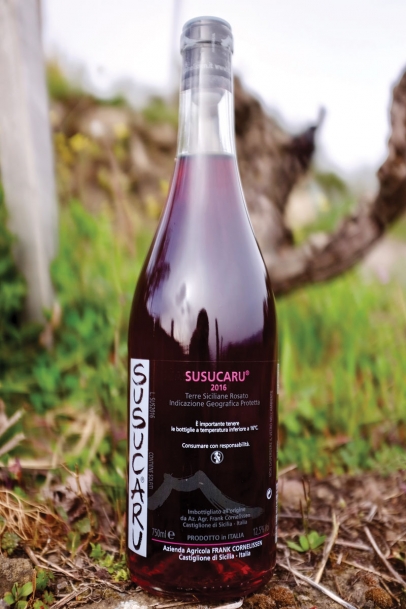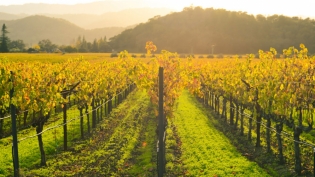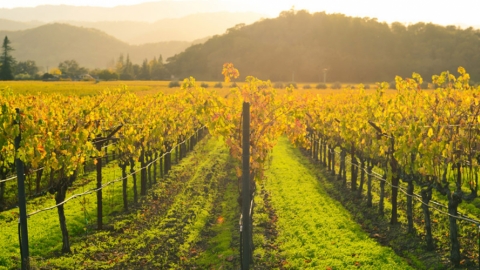Rosés Haven’t Jumped the Shark Yet
Rosé frenzy will be in full effect by the time this hits the newsstands, and for me it’s a bittersweet moment. They were championed as the style 20 years ago when the volumes produced were minute, and lately we’ve seen a glut of pink wines.
Rosé is so much of a thing that it’s become brosé, and then frosé, which destroys its allure and frustrates me because style triumphs over substance.
Serious winemaker rosés – those that favor dry varieties, steering clear of anything overly sweet – are almost always stellar and versatile food wines. They also stand alone beautifully, especially on a warm afternoon or even in the shower after a long sultry South Florida night.
Rosé wines are simply wines that are pink, the result of being vinified with only a brief period of contact between the red grape skins and the juice or must. Known as rosé in France, rosado in Spain, rosato in Italy and occasionally “blush” in the U.S., rosé wines are made from many of the most-common grape varieties, including Cabernet Sauvignon, Sangiovese, Syrah, Tempranillo, Zinfandel, Merlot, Mourvedre and Grenache. Rosé wine can be made from a single grape variety, but it’s more common as a blend.
What makes this best-served-chilled in-between wine such a staple of the spring and summer table? When it first originated in ancient Greece, rosé was more or less made by accident – it was simply red wine that wasn’t macerated long enough on the grape skins. The style remained popular in what would become Provence and its Mediterranean neighbors. Fast-forward to the modern era, where rosé entered the international spotlight when the region became a tourist destination. Imagine the thinking that followed: If this is what they drink in a sunny, coastal paradise, then this is what we should drink whenever it feels like that wherever we are – especially South Florida!
There’s definitely substance to explore when it comes to drinking pink. You’ll find tremendous values from well-regarded producers, as well as a great range of styles to consider – from dark and juicy wines to others that are pale, fresh and lean, brimming with bright acidity. There’s a guaranteed match for any dishes that make up your warm-weather spread. Here are three that have serious street cred.
Ameztoi Txakolina Rubentis 2017
Txakolina, the dry, spritzy wine coming out of a tiny bayside section of Spanish Basque country, has held the heart-shaped gaze of cork-dorks for a long moment now, and with good reason. Light, fresh and positively chuggable, it’s the easy-going friend you bring to the party because you just know she’ll get along with everyone. Among the region’s producers, Ameztoi reigns supreme. The whites are lovely and full of character, but the rosado (made from the same Hondarrabi Zuri and Hondarrabi Beltza grapes) is its own particular brand of rosé catnip. Vibrant with tons of juicy, tart red fruit, it’s balanced by a nervy mineral-lime acidity and a delicate smoked sea-salt tinge. The baby-pink wine is bottled to retain a little of the natural carbonation from fermentation, which adds to its lively personality. Factor in that it’s screw-cap-sealed and tops off at a mere 11% ABV, it’s safe to say that this bottle pretty much owns the perfect picnic-wine competition.
Frank Cornelissen Susucaru 2016
Susucaru is a rosé/light red blend from multiple grape varieties, such as Malvasia, Moscadella, Insolia and Nerello Mascalese found in rocky hillsides of Sicily. Susucaru means “they have swallowed it, or they have greedily eaten or drunk it.” But there’s also a negative translation, meaning “they have stolen it.” This refers to a vintage where one of the pickers shouted when he arrived at a vineyard to harvest and discovered the grapes had all been stolen. Frank is today one of the most revered and sought-after natural winemakers in the world, making several single-vineyard cuvees (including the “Magma”) along with multiple blended cuvees: Munjebel Rosso and Bianco “classico” blends, a series of high-grown bottlings dubbed VA (“Vigne Alte”), a crushable field blend dubbed “Contadino” (made up of Nerello Mascalese, Nerello Capuccio, Alicante Bouschet, Minella and Uva Francesca) and, of course, the rosé/light red blend “Susucaru.”
Arnot Roberts Rosé 2017
Duncan Arnot and Nathan Roberts find uber-distinctive and often extreme and unique vineyard sites, spanning from Mendocino County to the north to the far reaches of the Santa Cruz Mountains to the south. They make kick-arse wines like this favorite. A rosé of Touriga Nacional, the grapes come from two vineyard sources, Luchsinger and St. Amant Vineyards. The grapes have a vibrant personality with fine tannins and bright acidity. The fruit from both of these vineyard sites was crushed lightly prior to pressing and fermented separately in stainless steel by native yeasts. The resulting wines were blended together to harmonize for four months before bottling in early January. With a pale salmon color, a light-to-medium body and an alcohol level of 11.5%, the wine has lively aromas of white peach, honeydew melon and orange zest, overlaid with dried herbs. The palate bursts with fresh fruit balanced by salinity and savory character.








